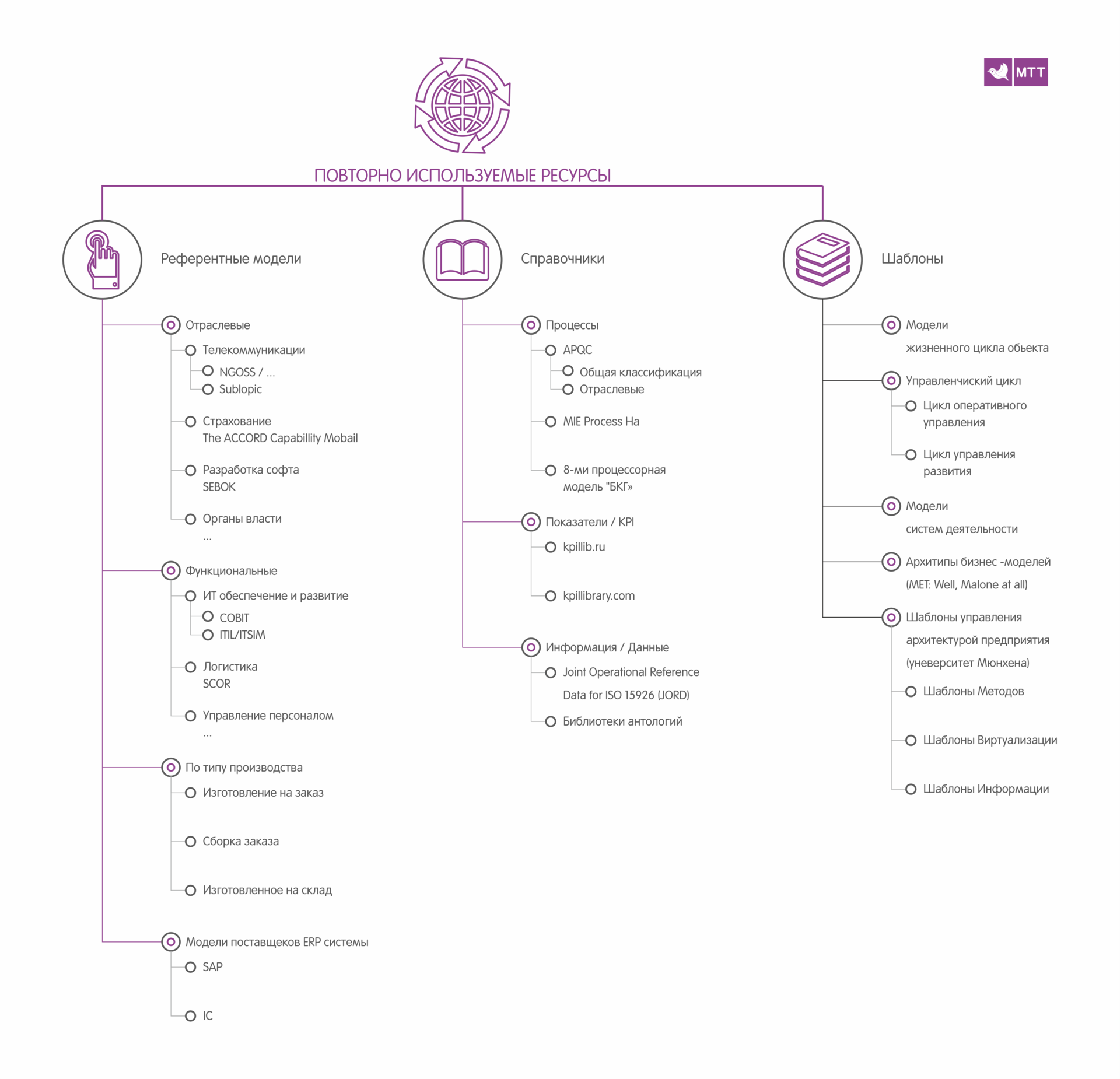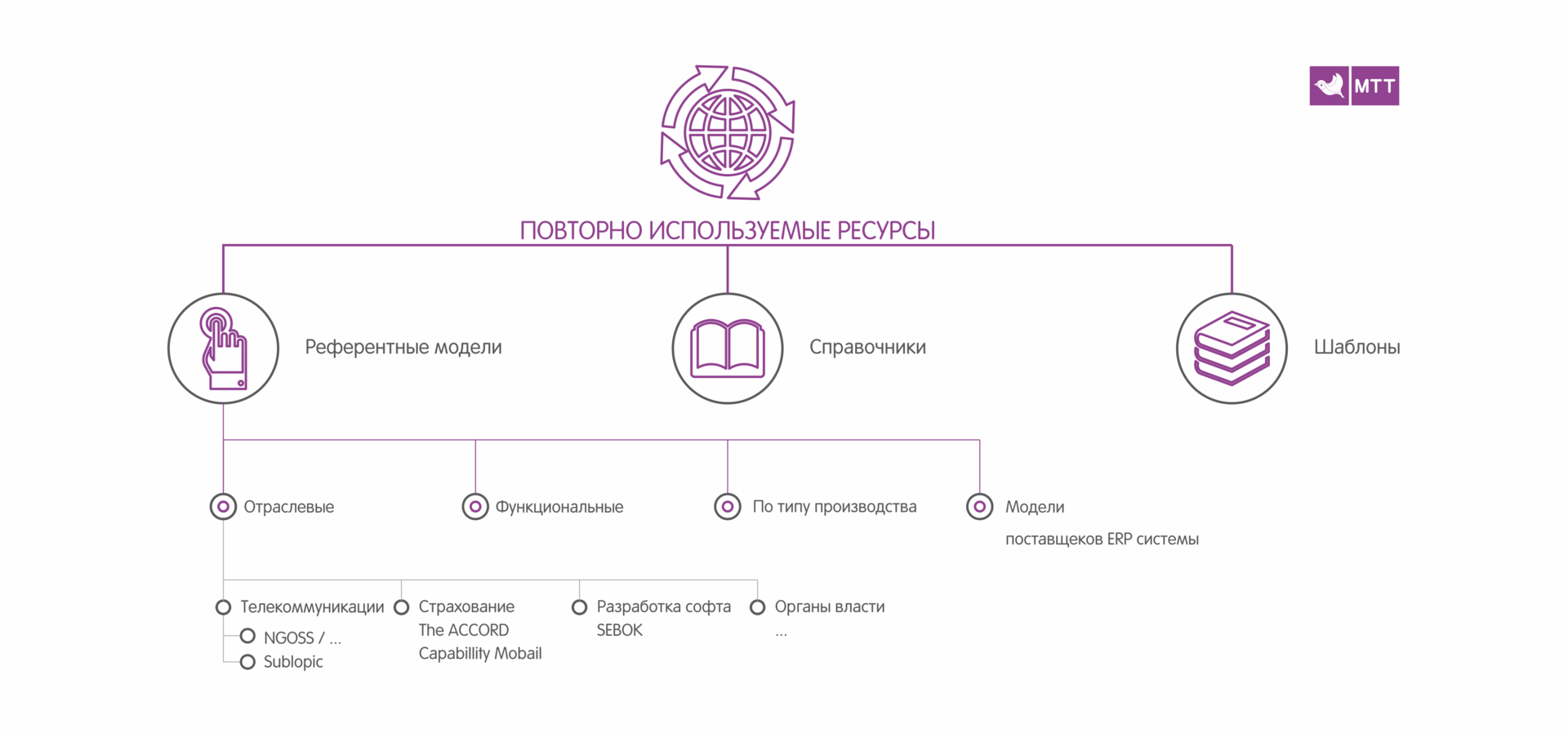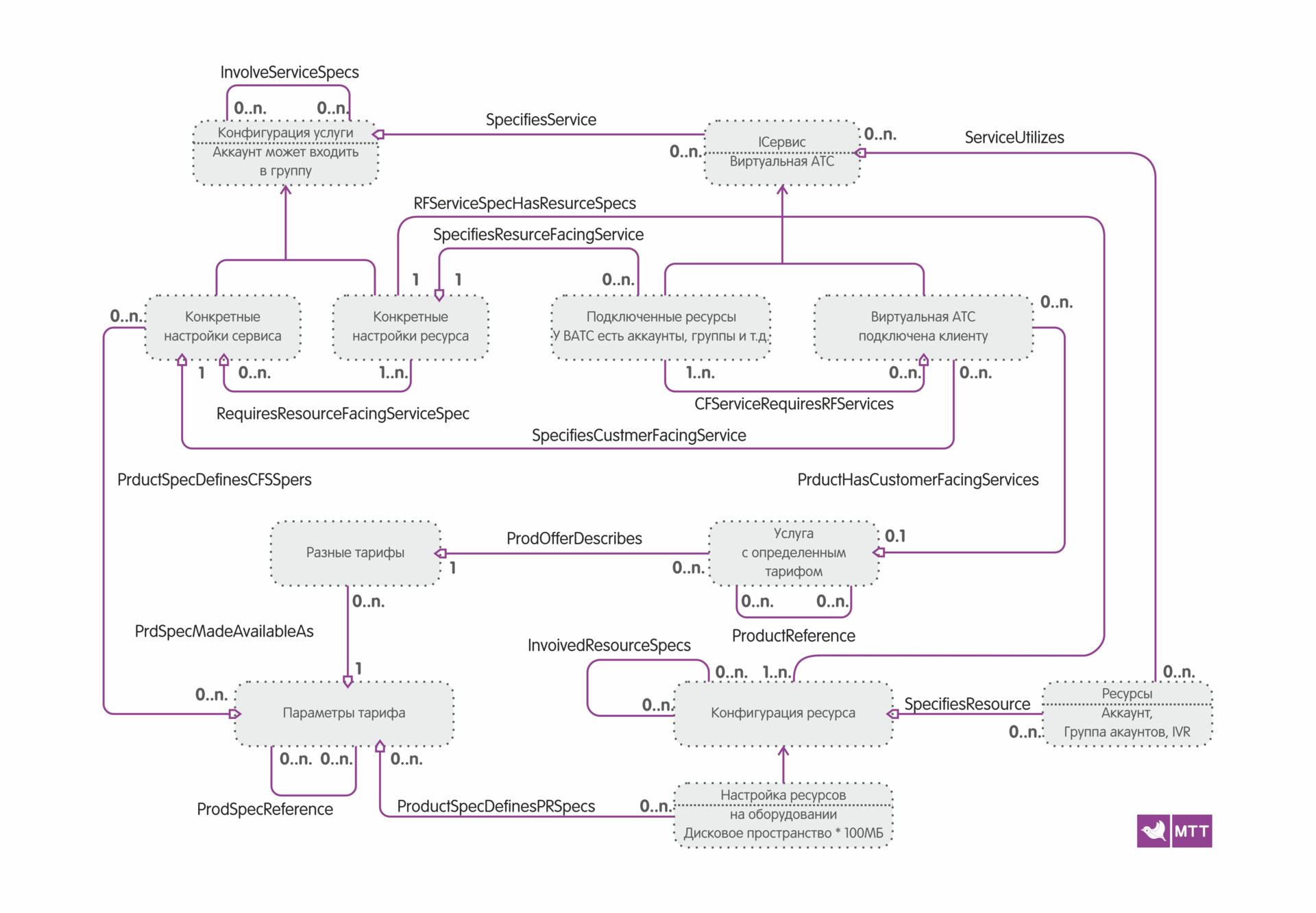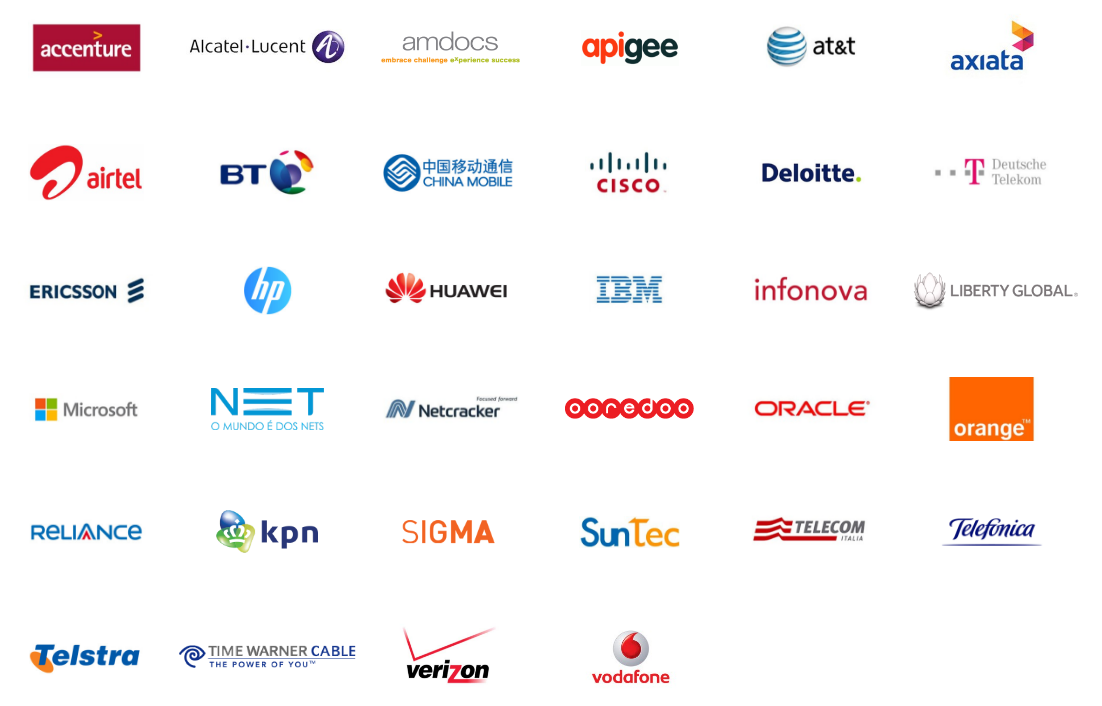Implementing Frameworx in the Telecom API
The speed of development of the telecommunications market forces its participants to continuously improve their business processes, reducing costs and minimizing the time spent developing and bringing new services to the market. A big problem with this is building the right business models within the organization. In the process of implementing the YouMagic.Pro service, we were faced with the fact that every productologist who started this project saw its development in its own way. Interfaces, forms changed, we rewrote the code, and all this led to errors in the service. At some point, the stated requirements have already ceased to be compatible with the original architecture and we decided to see how business processes are implemented in other telecom companies. As a result of the analysis, we came to the decision to implement the SID Frameworx reference models from TM Forum. In this article, we will explain what reference models are and how to start developing telecom services that will be able to adapt for various changes in business requirements in the future.

So, what are reference models and where did they come from.
To begin, consider the concepts of business engineering and engineering approach. With the help of business engineering technology, you can create, change and reorganize enterprises, as well as ensure the consistency of their various components: strategies, structures, business processes, information systems, etc. Business engineering, in turn, is based on an engineering approach, an important feature of which is the use of formalized knowledge adapted for reuse.
')
Formalized knowledge is knowledge that can be described, documented and told about them to other people. They are presented in graphic form, in the form of drawings, specifications, textbooks, procedures. They can be words, numbers and objects. From the point of view of practice, reusable resources and formalized knowledge can be divided into the following categories:

In all the variety of reusable resources, we are interested in reference models for the development, implementation and operation of software for telecom. They are the reference schemes, procedures and methods of business organization, developed on the basis of real experience of implementation in various companies around the world. In this article, we will focus on the concept of frameworx reference models for telecommunications companies.

Telecommunication and information technologies, as well as the range of services offered by communication companies, are developing and changing extremely dynamically. Now business can not spend on the development of services 1-2 years, as was the case earlier. At present, the time for service to market is measured in months. Together with them, the components of control information systems, as well as the business processes themselves are in constant development. At the same time, companies quite often do not have time to conduct full-scale design of new processes. What to say about the development, testing and implementation of control modules that will implement new services in the systems.
Another difficulty in managing business processes in telecommunications companies is that they automate the interaction with customers, enabling them to manage the services provided in real time independently. Most often this happens through a web interface.
Most programmers, or just techies, will answer the question about business processes in the company: "This is a description of how the application from the support employee is transferred to the CRM technical specialist." Or give another example from the life of any company. We looked at it from the other side. Connecting a client and his work in your account is also a business process. There are also a large number of hidden business processes. For example, unlocking when recharging; activation of discounts when ordering a specific set or volume of services. All these business processes are overwhelmingly automated in services. When the business process is automatic, the subjects (people) are practically absent, and the code controls the objects of the business process. And since subjects are code, he cannot make human-like decisions in the context of insufficient information. In this embodiment, the construction of universal and effective data models for the manipulation of automatic code comes to the fore.
In the process of designing the core of the MTT Business product, we studied the existing experience and found a solution: to use information frameworks. They describe typical structures for building models, data for industries or subject areas. Starting from a general description of the main objects (for us, for example, this is a client, service, tariff, etc.) and up to specific component diagrams already described in the UML notation. They already contain the best-practices of the experience of specialists who solved similar problems earlier.
The Tele Management Forum (TM Forum) is a non-profit association that unites telecommunications companies and their suppliers to write standards, guidelines and models for information technology in the telecommunications industry. The association was founded in 1988 at the initiative of the British Telecom and AT & T companies and was first called the OSI / Network Management Forum. By the beginning of 1989, the first specification of the OSI / NM Forum protocol was approved, and already in 1990 the organization included 85 companies from 13 countries. In the future, TM Forum united almost all global telecommunications companies.
The main areas of research and development of the TM Forum are:
Frameworx is an evolution of the NGOSS concept. As already mentioned, the main task of this concept is to define standards for business processes of telecom operators, as well as to unify the presentation formats used in data management systems and interfaces. The features of the Frameworx concept have become several factors.
1. Separation of business processes and applied technical components.
Any business process should be managed as part of a centralized infrastructure. To do this, use mechanisms that provide a sequence of actions. They are also responsible for monitoring the progress of the business process from one application to another.
2. Distributed system with non-rigid connections between its elements.
Frameworx implies the creation of “distributed systems” with non-rigid links between their elements. This means that instead of a single monolithic application, it is proposed to use a set of integrated and interoperable applications to manage all operations of a telecommunications company.
3. General information model.
Applications running in the Frameworx concept should be able to exchange various kinds of data with each other. In addition, each application must understand how any other application interprets any block of transmitted data. Such a model of work is called a general information model.

The basis of the concept is formed by maps and models of business processes. Frameworx includes the following structures:

The information model (information framework) is an integral part of Frameworx and determines the approach to the description and use of data involved in the business processes of a communications company.
Information structure (SID) is a basic model and a general dictionary of all information necessary for the implementation of business processes. Using SID reduces the complexity of maintenance, system integration, development and design.
From the point of view of practice, the SID Framework can be represented as a diagram.

The product "MTT Business" has a two-tier architecture:
The portal interacts with the BackEnd API via HTTP JSON RPC2.0. Taking into account the fact that most of the services in it involve the provision of communication services, it can be said that there is a third level - the level of the telecommunications network.
When making this decision, we also understood that in addition to the single portal of the MTT Business product, other portals that implement similar services and business rules can be connected to the same API. Our expectations were met, and a year after the launch of the production of MTT Business, we connected two partners with similar services to the API without any significant modifications.
To implement business logic in the API, we implemented several SID Framework domains: Product, Customer, Service, Resource. The implementation of the MTT Business service at the development stage did not require the implementation of all business entities (ABE) from these domains. This is due to the fact that, for example, the service maintenance process is implemented in other systems and business entities such as Customer Problem, Customer SLA, Service Trouble, etc., are covered by these systems. The diagram below shows the business entities implemented in MTT Business.

MTT Business has a private API that allows MTT partners to implement similar telecom services with it. If you only focus on APIs, you can see that they do not fully reflect the SID Framework. It is implemented inside and makes up the core hidden from the user API. This choice was deliberate — the API itself reflects the final business processes, not abstractions.
The SID also contains recommendations for implementing the interaction between business entities of different domains. In our case, the main interaction is localized between products, services and resources. This is best reflected by the corresponding SID chart.

For a visual representation of how these business entities and domains are used in MTT Business, the diagram below reflects the marketing names of the Virtual PBX service, which is one of the key ones in MTT Business.

Any choice implies a subsequent assessment of the effects to which it leads. Formalized or not. Of course, when we chose this approach, we were not sure whether it would be effective in the further development of the code, systems, services, and product. And they assumed that a formal audit and evaluation, even if internal, would be necessary for themselves. However, the “life test” passed by itself. In the process of numerous improvements, the introduction of new services, the implementation of marketing campaigns and so on. Code refinements were minimal in many cases, which made it possible to implement more business ideas than was possible in services with architectural design without regard to reference information models. Now we are planning to implement this approach to data management at the enterprise level in order to achieve the strategic goal of integration and the creation of any service on the MTT platform in 2 weeks.
Sources used
Reference models and technologies of business engineering
Kudryavtsev D.V. Technology business engineering: studies. allowance / D.V. Kudryavtsev, M.Yu. Arzumanyan, L.Yu. Grigoriev. - SPb .: Polytechnic Publishing House. University, 2014. - 427s.

Reference Models
So, what are reference models and where did they come from.
To begin, consider the concepts of business engineering and engineering approach. With the help of business engineering technology, you can create, change and reorganize enterprises, as well as ensure the consistency of their various components: strategies, structures, business processes, information systems, etc. Business engineering, in turn, is based on an engineering approach, an important feature of which is the use of formalized knowledge adapted for reuse.
')
Formalized knowledge is knowledge that can be described, documented and told about them to other people. They are presented in graphic form, in the form of drawings, specifications, textbooks, procedures. They can be words, numbers and objects. From the point of view of practice, reusable resources and formalized knowledge can be divided into the following categories:

In all the variety of reusable resources, we are interested in reference models for the development, implementation and operation of software for telecom. They are the reference schemes, procedures and methods of business organization, developed on the basis of real experience of implementation in various companies around the world. In this article, we will focus on the concept of frameworx reference models for telecommunications companies.

The benefits of implementing existing models over design from scratch
Telecommunication and information technologies, as well as the range of services offered by communication companies, are developing and changing extremely dynamically. Now business can not spend on the development of services 1-2 years, as was the case earlier. At present, the time for service to market is measured in months. Together with them, the components of control information systems, as well as the business processes themselves are in constant development. At the same time, companies quite often do not have time to conduct full-scale design of new processes. What to say about the development, testing and implementation of control modules that will implement new services in the systems.
Another difficulty in managing business processes in telecommunications companies is that they automate the interaction with customers, enabling them to manage the services provided in real time independently. Most often this happens through a web interface.
Most programmers, or just techies, will answer the question about business processes in the company: "This is a description of how the application from the support employee is transferred to the CRM technical specialist." Or give another example from the life of any company. We looked at it from the other side. Connecting a client and his work in your account is also a business process. There are also a large number of hidden business processes. For example, unlocking when recharging; activation of discounts when ordering a specific set or volume of services. All these business processes are overwhelmingly automated in services. When the business process is automatic, the subjects (people) are practically absent, and the code controls the objects of the business process. And since subjects are code, he cannot make human-like decisions in the context of insufficient information. In this embodiment, the construction of universal and effective data models for the manipulation of automatic code comes to the fore.
In the process of designing the core of the MTT Business product, we studied the existing experience and found a solution: to use information frameworks. They describe typical structures for building models, data for industries or subject areas. Starting from a general description of the main objects (for us, for example, this is a client, service, tariff, etc.) and up to specific component diagrams already described in the UML notation. They already contain the best-practices of the experience of specialists who solved similar problems earlier.
Why we chose TM Forum and Frameworx
The Tele Management Forum (TM Forum) is a non-profit association that unites telecommunications companies and their suppliers to write standards, guidelines and models for information technology in the telecommunications industry. The association was founded in 1988 at the initiative of the British Telecom and AT & T companies and was first called the OSI / Network Management Forum. By the beginning of 1989, the first specification of the OSI / NM Forum protocol was approved, and already in 1990 the organization included 85 companies from 13 countries. In the future, TM Forum united almost all global telecommunications companies.
The main areas of research and development of the TM Forum are:
- Development of the concept of New Generation Operations Systems and Software (NGOSS). This is the main initiative of TM Forum. It is to simplify and standardize the processes of determining, developing and implementing OSS / BSS systems in the telecommunications industry.
- Modeling and automation of processes.
- Regulation of interaction with consumers of services.
TM Forum concepts are used worldwide by the leaders in the information and telecommunication services market.
Frameworx
Frameworx is an evolution of the NGOSS concept. As already mentioned, the main task of this concept is to define standards for business processes of telecom operators, as well as to unify the presentation formats used in data management systems and interfaces. The features of the Frameworx concept have become several factors.
1. Separation of business processes and applied technical components.
Any business process should be managed as part of a centralized infrastructure. To do this, use mechanisms that provide a sequence of actions. They are also responsible for monitoring the progress of the business process from one application to another.
2. Distributed system with non-rigid connections between its elements.
Frameworx implies the creation of “distributed systems” with non-rigid links between their elements. This means that instead of a single monolithic application, it is proposed to use a set of integrated and interoperable applications to manage all operations of a telecommunications company.
3. General information model.
Applications running in the Frameworx concept should be able to exchange various kinds of data with each other. In addition, each application must understand how any other application interprets any block of transmitted data. Such a model of work is called a general information model.

The basis of the concept is formed by maps and models of business processes. Frameworx includes the following structures:
- Extended eTOM business process map (process framework). It describes the structure of the business processes of telecommunications companies. The basic element of this framework is the business task. A task can be a process element, when, for example, a set of individual tasks is combined into a certain flow.
- Information model SID (information framework). Defines the approach to the description and use of data involved in the business processes of the communication company. The base element of the framework is a logical / business entity (information object).
- TAM application map (application framework). Describes the typical structure of the components of the information environment of communications enterprises. The basic element of this framework is functionality (functionality). This is a certain set of functions that forms the smallest possible functional unit. The combination of one or more functionalities forms an application.
- Integration architecture and contractual definition of interfaces (integration framework). The basic element of the framework is a service / contract. Service is a set of functions and information objects exposed by the system to the outside in order to interact with the environment. Service is what other applications need to know about the application.
- Reference business metrics model.
- Practical recommendations and examples of use.

SID Framework
The information model (information framework) is an integral part of Frameworx and determines the approach to the description and use of data involved in the business processes of a communications company.
Information structure (SID) is a basic model and a general dictionary of all information necessary for the implementation of business processes. Using SID reduces the complexity of maintenance, system integration, development and design.
From the point of view of practice, the SID Framework can be represented as a diagram.

How and where did we apply the SID
The product "MTT Business" has a two-tier architecture:
- Web portal only with the necessary logic inside.
- BackEnd API with the implementation of all business processes.
The portal interacts with the BackEnd API via HTTP JSON RPC2.0. Taking into account the fact that most of the services in it involve the provision of communication services, it can be said that there is a third level - the level of the telecommunications network.
When making this decision, we also understood that in addition to the single portal of the MTT Business product, other portals that implement similar services and business rules can be connected to the same API. Our expectations were met, and a year after the launch of the production of MTT Business, we connected two partners with similar services to the API without any significant modifications.
To implement business logic in the API, we implemented several SID Framework domains: Product, Customer, Service, Resource. The implementation of the MTT Business service at the development stage did not require the implementation of all business entities (ABE) from these domains. This is due to the fact that, for example, the service maintenance process is implemented in other systems and business entities such as Customer Problem, Customer SLA, Service Trouble, etc., are covered by these systems. The diagram below shows the business entities implemented in MTT Business.

MTT Business has a private API that allows MTT partners to implement similar telecom services with it. If you only focus on APIs, you can see that they do not fully reflect the SID Framework. It is implemented inside and makes up the core hidden from the user API. This choice was deliberate — the API itself reflects the final business processes, not abstractions.
The SID also contains recommendations for implementing the interaction between business entities of different domains. In our case, the main interaction is localized between products, services and resources. This is best reflected by the corresponding SID chart.

For a visual representation of how these business entities and domains are used in MTT Business, the diagram below reflects the marketing names of the Virtual PBX service, which is one of the key ones in MTT Business.

What's next?
Any choice implies a subsequent assessment of the effects to which it leads. Formalized or not. Of course, when we chose this approach, we were not sure whether it would be effective in the further development of the code, systems, services, and product. And they assumed that a formal audit and evaluation, even if internal, would be necessary for themselves. However, the “life test” passed by itself. In the process of numerous improvements, the introduction of new services, the implementation of marketing campaigns and so on. Code refinements were minimal in many cases, which made it possible to implement more business ideas than was possible in services with architectural design without regard to reference information models. Now we are planning to implement this approach to data management at the enterprise level in order to achieve the strategic goal of integration and the creation of any service on the MTT platform in 2 weeks.
Sources used
Reference models and technologies of business engineering
Kudryavtsev D.V. Technology business engineering: studies. allowance / D.V. Kudryavtsev, M.Yu. Arzumanyan, L.Yu. Grigoriev. - SPb .: Polytechnic Publishing House. University, 2014. - 427s.
Source: https://habr.com/ru/post/322972/
All Articles
